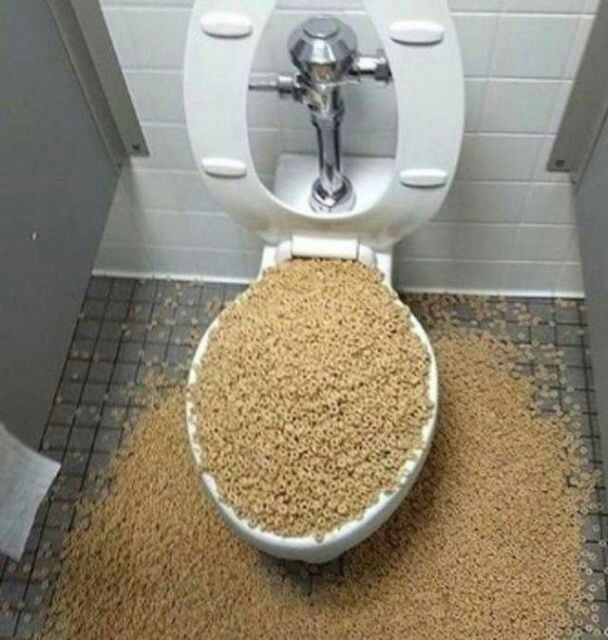Is it Suitable to Dispose of Food in the Toilet?
Is it Suitable to Dispose of Food in the Toilet?
Blog Article
What're your opinions on Is it safe to flush food (especially rice) down the toilet??

Intro
Many individuals are frequently faced with the predicament of what to do with food waste, particularly when it involves leftovers or scraps. One common question that develops is whether it's all right to flush food down the commode. In this article, we'll delve into the reasons why individuals might take into consideration purging food, the repercussions of doing so, and alternative approaches for appropriate disposal.
Reasons why people could consider flushing food
Lack of awareness
Some people may not know the potential harm triggered by purging food down the toilet. They may erroneously believe that it's a harmless method.
Benefit
Purging food down the bathroom might seem like a fast and very easy solution to disposing of unwanted scraps, especially when there's no close-by garbage can offered.
Idleness
In many cases, individuals may simply choose to flush food out of large negligence, without considering the effects of their actions.
Effects of flushing food down the bathroom
Environmental influence
Food waste that winds up in waterways can add to air pollution and injury marine communities. In addition, the water made use of to purge food can stress water resources.
Plumbing concerns
Purging food can bring about clogged pipes and drains, creating pricey plumbing repairs and hassles.
Sorts of food that need to not be purged
Fibrous foods
Foods with fibrous structures such as celery or corn husks can get tangled in pipelines and trigger obstructions.
Starchy foods
Starchy foods like pasta and rice can soak up water and swell, resulting in clogs in pipelines.
Oils and fats
Greasy foods like bacon or cooking oils ought to never ever be purged down the commode as they can solidify and create obstructions.
Appropriate disposal methods for food waste
Making use of a waste disposal unit
For homes geared up with waste disposal unit, food scraps can be ground up and purged through the plumbing system. Nevertheless, not all foods are suitable for disposal in this way.
Recycling
Certain food packaging materials can be recycled, reducing waste and minimizing ecological influence.
Composting
Composting is an eco-friendly way to throw away food waste. Organic materials can be composted and utilized to enhance dirt for horticulture.
The significance of correct waste management
Decreasing environmental harm
Proper waste monitoring techniques, such as composting and recycling, assistance minimize pollution and maintain natural resources for future generations.
Securing plumbing systems
By avoiding the method of flushing food down the toilet, home owners can protect against costly pipes repair work and keep the integrity of their plumbing systems.
Final thought
In conclusion, while it might be alluring to purge food down the toilet for benefit, it's important to understand the possible effects of this action. By taking on proper waste monitoring methods and taking care of food waste sensibly, individuals can add to much healthier pipes systems and a cleaner atmosphere for all.
FLUSH FOOD DOWN THE TOILET?
FLUSHING FOOD CAN CAUSE BLOCKED DRAINS IN YOUR HOME
All of the plumbing fixtures in your home are connected to the same sewer pipe outside of your home. This outdoor sewer pipe is responsible for transporting all the wastewater from your home to the Council sewer mains. Even small pieces of food that go down the kitchen sink can cause problems for your sewer. It should therefore be obvious that flushing larger bits of food, such as meat, risks a clog in either the toilet itself or the sewer pipes. Flushing greasy food is even more problematic because oil coagulates when it cools, coating the interior lining of your pipes.
THE TOILET IS NOT A BIN
Food isn’t the only thing that people shouldn’t be flushing down the toilet. People use the toilet to dispose of all kinds of things such as tampons, makeup wipes, dental floss, kitty litter and even underwear. Water goes to great lengths to educate residents about the high costs and stress placed on wastewater treatment systems simply from people flushing the wrong stuff down the toilet. It costs taxpayers millions of dollars each year, and homeowners thousands in blocked drain repairs.
FLUSHING FOOD IS A WASTE OF WATER
Flushing food is a waste of our most precious resource - water. In June this year Level 1 water restrictions were introduced to protect water supply from drought conditions. Much of New South Wales continues to be affected by prolonged drought with recent figures revealing up to 97 per cent of the state remains in drought. Depending on whether you have a single or dual flush toilet, every single flush uses between five and 11 litres of water. In the current climate this is a huge amount of water to be wasting on flushing food that should be placed in the bin (or better yet, the compost).
https://www.jabplumbingsolutions.com.au/blog/can-you-flush-food-down-the-toilet

As a serious reader about Is it safe to flush food (especially rice) down the toilet?, I thought sharing that blog post was a good idea. So long as you liked our blog post if you please be sure to share it. Thank you so much for your time spent reading it.
Schedule Today! Report this page